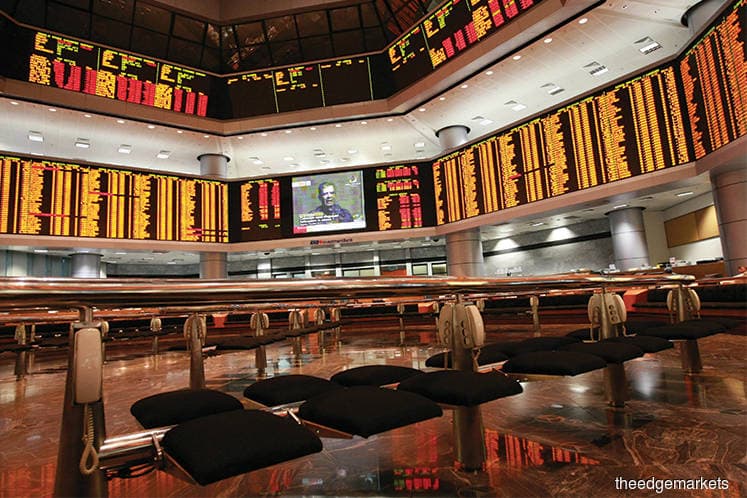
This article first appeared in The Edge Financial Daily on January 9, 2019
For 2018, the FBM KLCI ended up in red and the local market was not the only casualty. Markets globally ended lower. The index fell 5.8% last year, which was one of the lowest declines compared with other markets. The biggest drop in Asia was China’s Shanghai SEC Index that fell 24.6%. In Europe, Germany’s DAX fell 18.3%. The UK’s FTSE 100 Index fell 12.6%, while the US Dow Jones Industrial Average declined 6.7%.
The KLCI fell 1.3% in a week to 1,669.78 points last Friday on profit-taking after a two-week rally before the end of last year. Market sentiment was generally weak on a lack of catalysts. Most other markets closed higher except for the local market and Japan. The index closed at 1,672.76 points yesterday.
Trading volume was firm compared with the previous week but the trading value has declined significantly. This indicates that more lower-priced stocks are being traded and hence a lack of institutional participation. The average daily trading volume has risen to 1.9 billion shares from 1.6 billion in the previous week but the average daily trading value has stayed firm at RM1.2 billion.
Both local and foreign institutions were net sellers, while local retailers were net buyers. Net buying from local retailers was RM65.6 million. Net selling from local and foreign institutions were RM47.3 million and RM18.3 million respectively.
For the KLCI, decliners beat gainers 11 to four. Top gainers were Westports Holdings Bhd (+2.8% in a week to RM3.74), Hong Leong Financial Group Bhd (+2.1% in a week to RM19.26) and MISC Bhd (+1.4% to RM6.67). The top three decliners were Press Metal Aluminium Holdings Bhd (-5.6% to RM4.55), Dialog Group Bhd (-5.5% to RM2.91) and Axiata Group Bhd (-4.3% to RM3.80).
Global markets were generally bullish except for Japan and the local market. In Asia, market indices closed marginally higher, while European and US market indices closed at an average of 1.5% higher.
The US dollar slightly weakened against major currencies. The US dollar index declined to 96.2 points last Friday from 96.4 points the week before. The ringgit strengthened to RM4.13 to a US dollar compared with RM4.15 previously.
Gold prices rose for the third week on equity market uncertainty. The commodity exchange gold price increased 0.2% from the previous week to US$1,286.20 (RM5,299.14) an ounce last Friday. Crude oil snapped a three-week decline and surged 9.9% to US$57.42 per barrel. Crude palm oil also rebounded and increased 2.5% to RM2,171 per tonne last Friday.
Last week, I mentioned that the KLCI may test the next resistance level at 1,702 points before pulling back for a correction. The index was one point short of hitting the resistance level before it pulled back.
Technically, the KLCI is bearish in the short term as it has fallen below the short-term 30-day moving average. It rose above the moving average two weeks ago. The whipsaw on the short-term moving average indicates uncertainty in the short term. However, the index is still bearish for the long term, below the 200-day moving average and the Ichimoku Cloud indicator.
Momentum indicators were mixed. The Relative Strength Index and Momentum Oscillator have fallen below their mid-levels. However, the moving average convergence divergence indicator was still above its moving average. This indicates a weak bearish market trend.
We may see some rebound this week after a 3.3% gain in the Dow last Friday. The KLCI may test 1,700 points again this week, and if it fails to break above this level, the trend would still be bearish and further declines are expected.
The above commentary is solely used for educational purposes and is the contributor’s point of view using technical analysis. The commentary should not be construed as an investment advice or any form of recommendation. Should you need investment advice, please consult a licensed investment adviser.